Make protein powder at home with just one ingredient and 15 minutes. It’s naturally vegan, allergen friendly, and great to add to smoothies, baked goods, and sauces. You can even customize it with additional flavors.
This post may contain affiliate links. Read my policy page for more information.
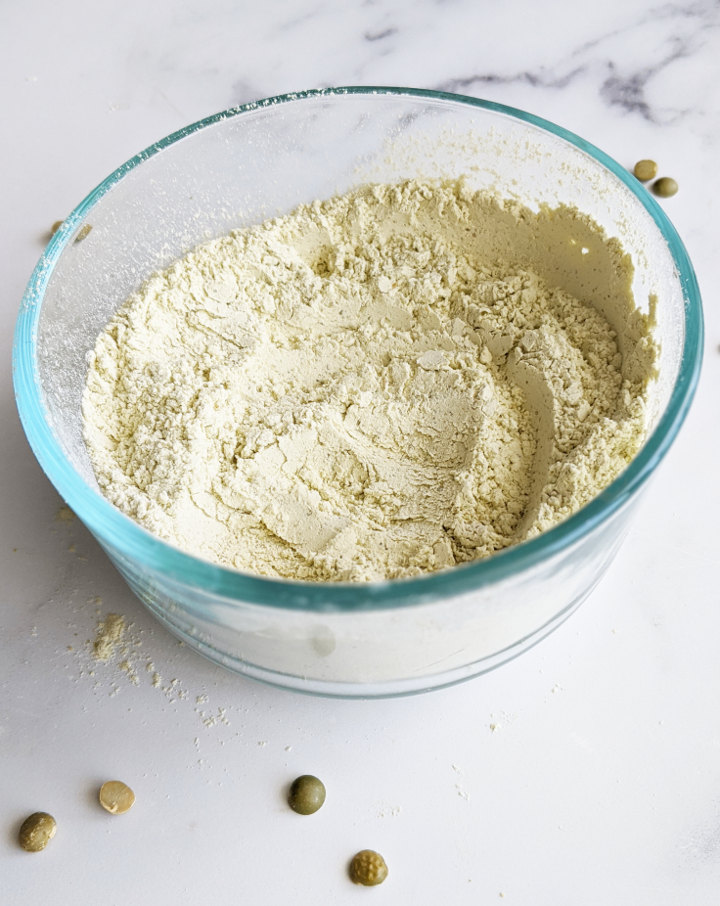
Did you know you can make your own protein powder at home? It’s actually a really simple process that I only just recently discovered when I had a bag of peas I needed to use up before my move and someone recommended me this video from Comer Vegano. I never realized how simple it can be. In this article I’ll show you just how easy it is and how to use it in a variety of ways.
I don’t normally consume protein powders because I don’t find them all that necessary for the price, but now that I know how to make my own at home, I think I’ll be enjoying them a lot more.
As a vegan, one might think that it is difficult to get enough protein through diet without supplementing. The truth is that protein is not that difficult to acquire if certain criteria are met. If you are eating a mostly whole foods plant-based diet and consuming enough calories for your energy and activity requirements, then it’s virtually impossible to not get enough protein unless there’s an underlying health condition.
Our protein requirements are not as much as the protein supplement companies would have us believe. In fact, the Recommended Dietary Intake of protein for an average adult is .36 grams of protein per pound of body weight or 0.8 grams of protein per kilogram of body weight.
That’s around 50 grams of protein per day for the average sedentary person. It may not seem like much but that’s two standard deviations above the minimum to prevent protein deficiency. So don’t worry, you won’t be withering away.
If you are more active and do weight lifting or endurance exercise you may need more protein. Some suggest increasing it to .65 grams of protein per pound of body weight. Either way, the rule above regarding eating enough on a whole foods plant-based diet should cover your protein needs.
However, from time to time we run short on time and need something to keep us full in between meals. We also may have physique goals that require higher protein intakes. That’s when protein powders can be beneficial.
You can actually make your own DIY protein powder out of several things: nuts, seeds, whole grains, beans, etc. But today I’m going to show you how to make it out of peas.

Health Benefits of Peas
Peas are a lesser known source of protein but it’s becoming more popular as more and more pea protein products and supplements are coming to the market. Peas are a great option for many because they are allergen friendly and easy to digest.
One cup of cooked split peas contains over 16 grams of protein. It’s also high in minerals such as Iron, Zinc, Manganese, Phosphorus, and Copper. It’s high in folate, the natural form of folic acid, and contains several B vitamins.
Peas also contain over 20 grams of fiber in one cup! Most Americans do not even get that much in one day even though the Daily Recommended Intake of Fiber on average is around 30 grams. Higher fiber intake can help lower cholesterol and is beneficial in managing blood-sugar.
And contrary to popular belief, there’s no such thing as an incomplete protein. All plants contain all nine essential amino acids. The term “incomplete protein” really just means that one or more of the essential amino acids are present in limited amounts. For peas, that is Methionine but this should not be a concern as long as you are diversifying your protein sources through out the day. Check out this article for the top plant-based sources of protein for a balanced vegan diet.
Antinutrients in Peas
A concern when it comes to consuming legumes are the presence of antinutrients. These are essentially compounds that block the absorption of other nutrients.
The main antinutrients found in peas are phytic acid and lectins which may interfere with the absorption of minerals such as iron, calcium, zinc, and magnesium. These can also affect digestion and cause bloating.
Levels of antinutrients are lower in peas than other legumes so for the average healthy person, they are not a concern. They are unlikely to cause problems unless eaten in large quantities.
In the case of pea protein powder, the quantity is small enough to not cause issues but if you notice any discomfort with digestion you can start with a smaller amount. Two tablespoons per serving is a good starting point.
Best Type of Peas for Protein Powder
There are several different types of peas to make protein powder with but today we’ll be making it with dry split peas. I’ve seen it made by using green peas, yellow peas, or even frozen peas, but these require an extra step of dehydrating.
Split peas, also known as field peas, are already dry which makes the process a lot faster. Field peas are dried with the outer shell removed, revealing the two halves. Dried peas will keep for several months if stored in an airtight container in a cool, dry, dark place such as a pantry. If you need to store them for longer, you can keep them in the refrigerator.
These are the same type of peas used to make commercial protein powders, however, they typically extract the starches and fiber, leaving a higher concentrated protein powder.
Our homemade version will not have as high amount of protein per scoop, but has the added benefit of additional fiber and nutrients that would otherwise have been removed.
How Much Protein is in Pea Protein Powder?
One cup of dry split peas has around 45 grams of protein. When processed into a fine powder, it makes just over one cup of protein powder.
Most commercial brand serving sizes are equivalent to 1/4 cup and contain around 20 grams of protein.
Based on this example, one serving of our homemade pea protein powder contains just over 11 grams of protein.
What you need
To make your own pea protein powder you will need a few things:
- A high-speed blender, food processor or spice grinder.
- A sieve, or fine mesh strainer to separate the flour/powder from any larger pieces.
- An airtight storage container.
How to Make
The process I’m going to show you is essentially making a pea flour because we are not extracting anything. We are simply processing the peas into a flour.
This process is the simplest because there is no need to presoak, sprout, or cook. In fact, you can eat raw split peas. That’s why we can make a DIY protein powder that can be used in smoothies and other raw foods like energy balls. One word of caution: You cannot do this with all legumes, especially kidney beans, as they can make you sick if not cooked first.
Here’s the easy process:
1. Place peas in your blender or food processor. I use a Ninja blender but any high-speed blender or food processor will do. Make sure whatever appliance you use is completely dry. You do not want any moisture in it or you will end up with a paste instead of a flour.
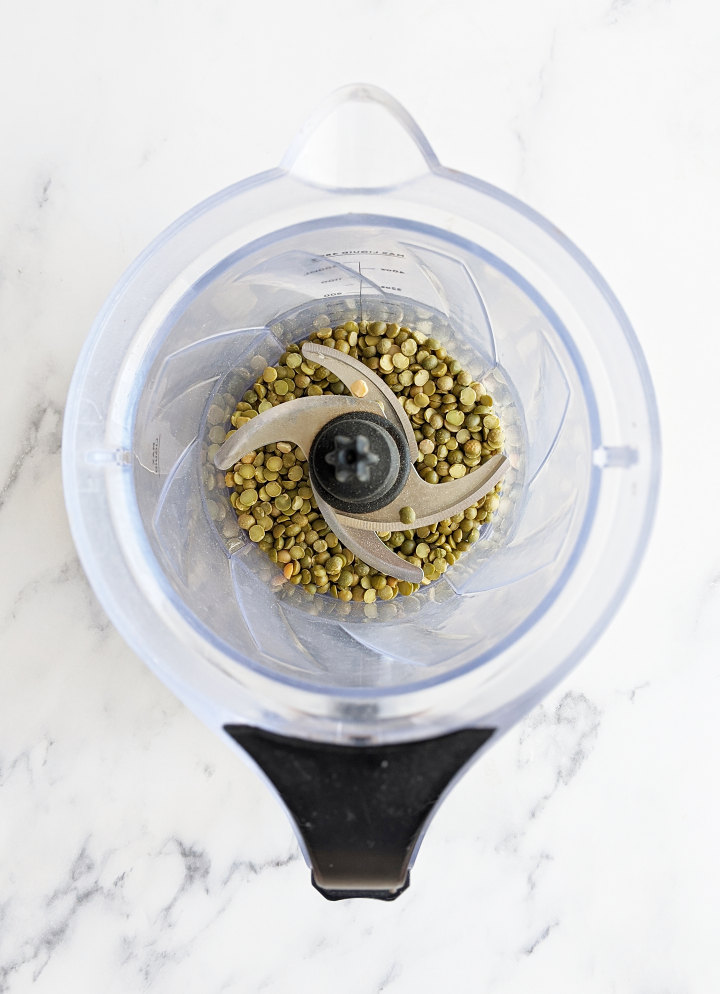
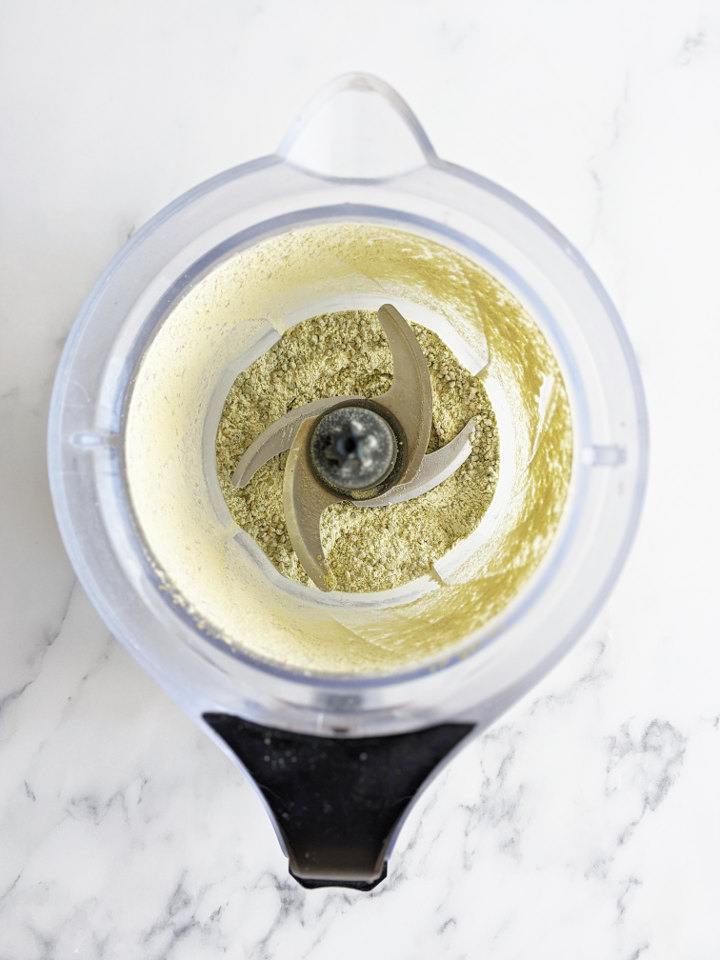
2. Blend for around 3 minutes. Make sure any openings are covered while it’s running so you don’t have pea flour wafting out of it.
3. Sift the processed peas over a bowl to separate the powder from any of the larger pieces.

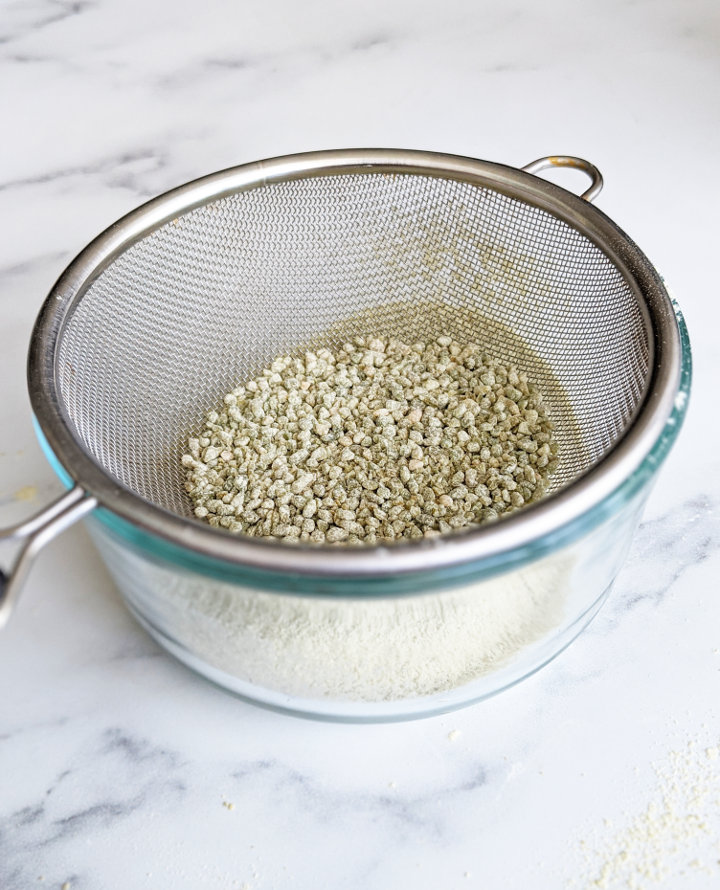
4. Reprocess the larger pieces in your blender for another 3 minutes and repeat step 3.
5. You now have pea protein powder!

Any leftover larger pieces can be ground using a coffee or spice grinder, or throw into a soup or stew so they don’t go to waste. They’re so small that they should cook quickly.
How to Store
To keep your homemade pea protein powder fresh for as long as possible, you’ll want to store it in an airtight container in the refrigerator. It should last in there at least one week but you can also freeze for longer. No need to thaw, it should stay as a powder when frozen.
How to Use
You can use pea protein powder in a number of things. Adding it to smoothies is perfect because it bulks up the smoothie, making it more filling and satiating. Usually 2-4 tablespoons is a good quantity to add to smoothies depending on your protein needs and taste preferences.
You can also use it in baked goods. Replace a little of the flour with pea protein. You can do the same with things like pancakes or waffles as well.
It can also be added to soups or sauces as a thickener.
Or add it to these No Bake Granola Bars or a bowl of oatmeal for some extra protein.
Why Not Just Buy Store-Bought Protein Powder?
You certainly can but it comes at a cost. First, it’s more expensive. You’ll be spending upwards of $20 per bag (I’ve even seen some for as much as $60) which might not even last you two weeks.
Making it at home can take less than $2 and just 15 minutes of your time. Additionally, most store-bought versions are going to have added sugars and natural flavors which are proprietary ingredients that are not necessarily natural at all.
I like knowing exactly what is in my food, so I like that making my own protein powder gives me the control of what goes into it. I can even customize it to my own preferences by adding different add-ins to flavor it.
Customizations
There are several ways to up the protein content even more or add some flavor to your protein powder. Although we can add flavors, I still find it best to blend into a smoothie rather than mix directly into water or plant milk.
Extra protein
- 1/4 cup raw flax seeds
- 1/4 cup hemp seeds
- 1/4 cup chia seeds
- 1/3 cup oat flour
- 1/4 cup coconut flour
Flavors
- 1 Tablespoon cocoa powder or cacao
- 1 Tablespoon coconut sugar
- 1 teaspoon maca powder
- 1/4 teaspoon ground cinnamon
- 1 teaspoon stevia powder
- 1/2 teaspoon vanilla bean powder
Let us know if you make this protein what your favorite custom combinations are!
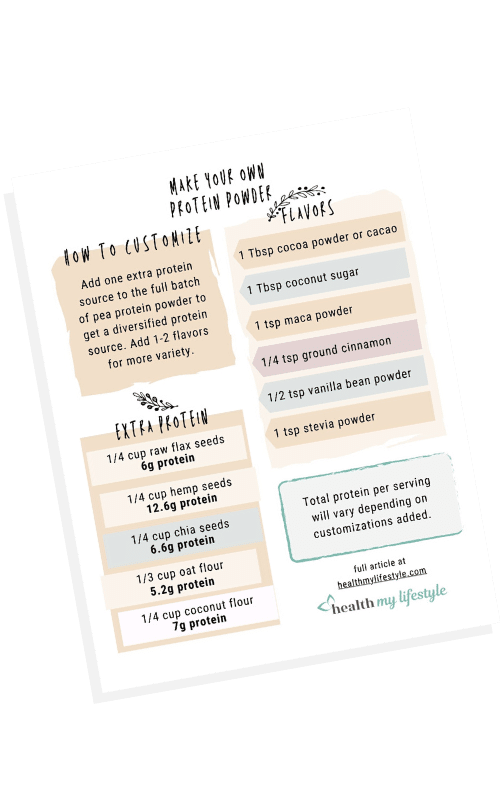
Here’s my favorite:
- 1/3 cup pea protein powder
- 1 tablespoon cocoa powder
- 1/4 teaspoon cinnamon
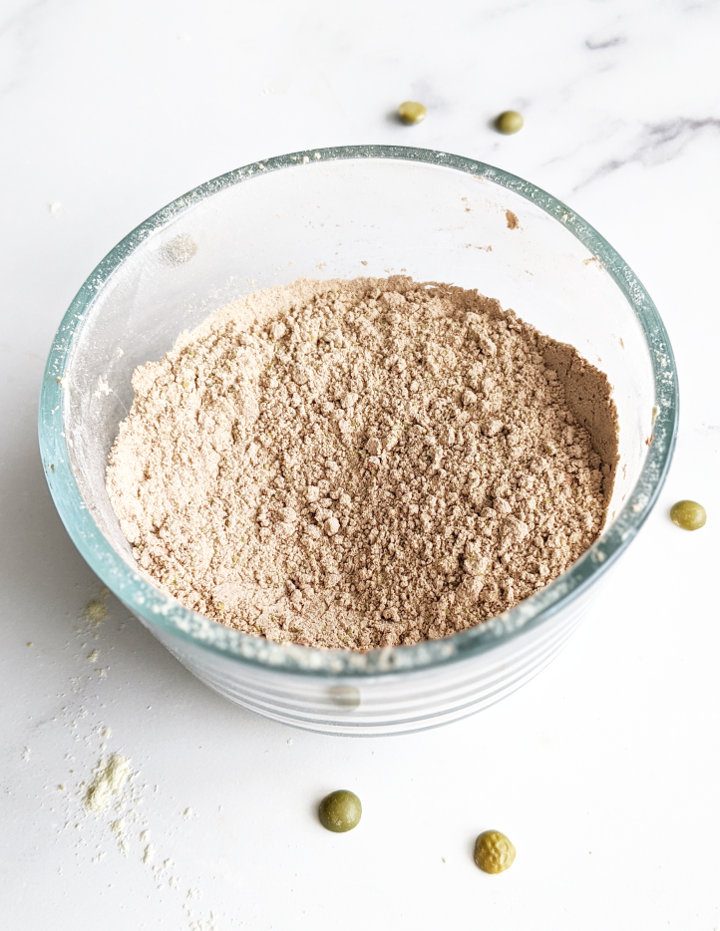
Add 4 Tablespoons of it to a smoothie with 1 cup frozen cherries, 1 banana, and 1 cup water or plant milk. It’s like a chocolate cherry black forest smoothie! Add more cocoa powder to make it even more chocolatey.
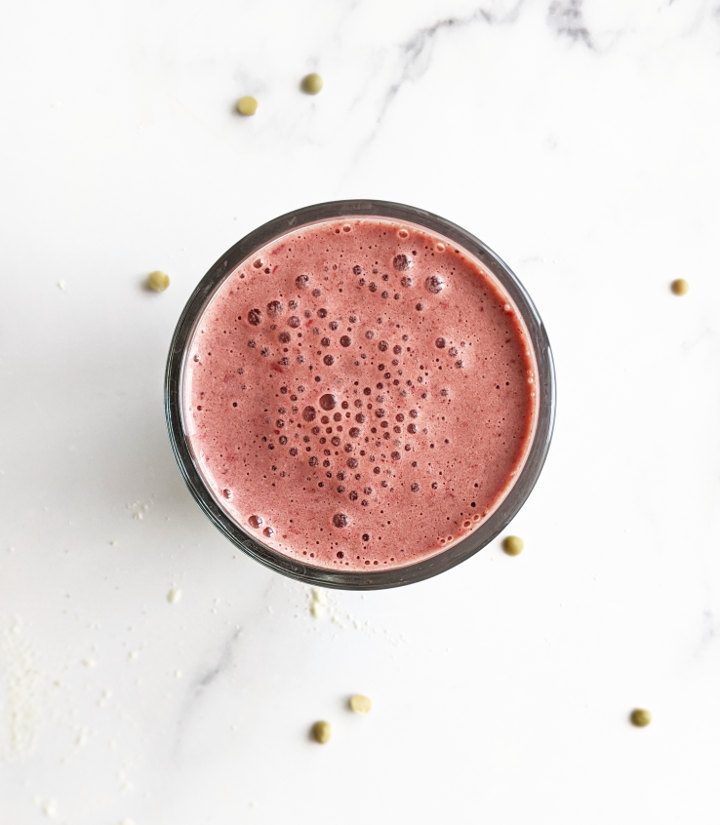
If you enjoyed this tutorial for making your own vegan protein powder please leave a comment below and give it 5 stars! Or on Pinterest (don’t forget to follow me!) you can now add pictures into reviews, too, and be sure to help me share on facebook!
If you’re looking for more easy, healthy recipes the Health My Lifestyle Meal Planner is full of them! You can easily narrow down exactly what you’re looking for with the extensive filtering options, plan out your week in seconds or grab a pre-made plan, track your calories and goals, and more! Try it for free! Check out the Meal Planner here.
Want to Save This Recipe?
Enter your email below and we’ll send it straight to your inbox! Plus, get weekly free recipes!
By submitting this form, you consent to receive emails from Health My Lifestyle.
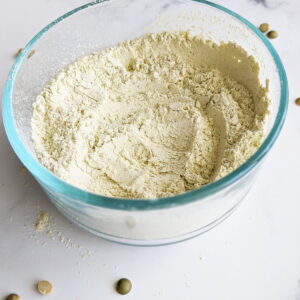
DIY Pea Protein Powder
Method
- Blender
Ingredients
- 1 cup split peas dry, uncooked
Instructions
- Place peas in a blender or food processor. I use a Ninja blender but any high-speed blender or food processor will do. Make sure whatever appliance you use is completely dry. You do not want any moisture in it or you will end up with a paste instead of a flour. Blend for around 3 minutes. Make sure any openings are covered while it's running so you don't have pea flour wafting out of it.
- Sift the processed peas over a bowl with a sieve or mesh strainer to separate the powder from any of the larger pieces. Reprocess the large pieces in your blender or food processor for another 3 minutes and sift again.
- Any leftover larger pieces can be ground using a coffee or spice grinder, or throw into a soup or stew so they don't go to waste. They're so small that they should cook quickly.
- Store pea protein powder in an airtight container in the refrigerator for up to a week or freeze for longer. See above article for how to add additional protein and flavor options to the powder.

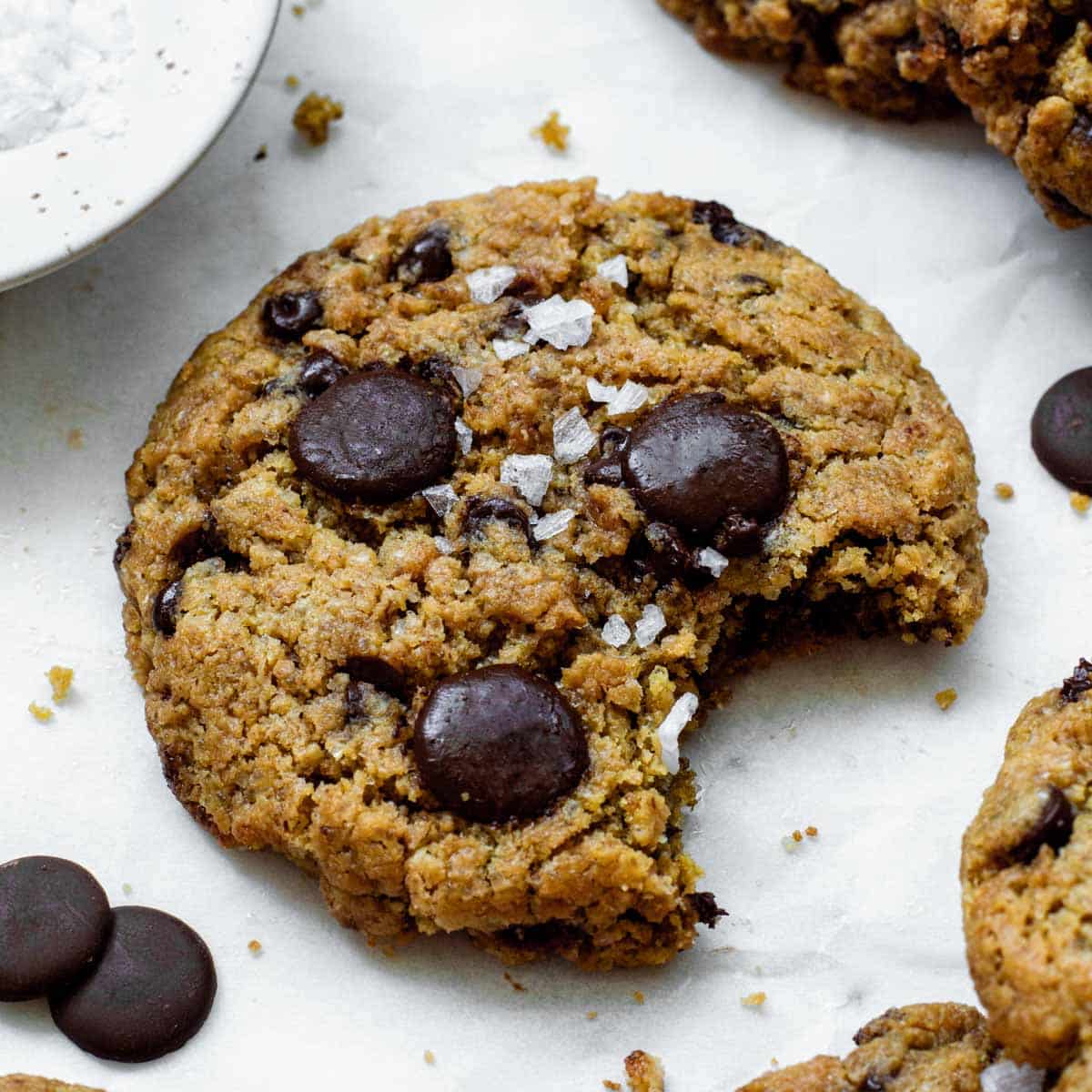
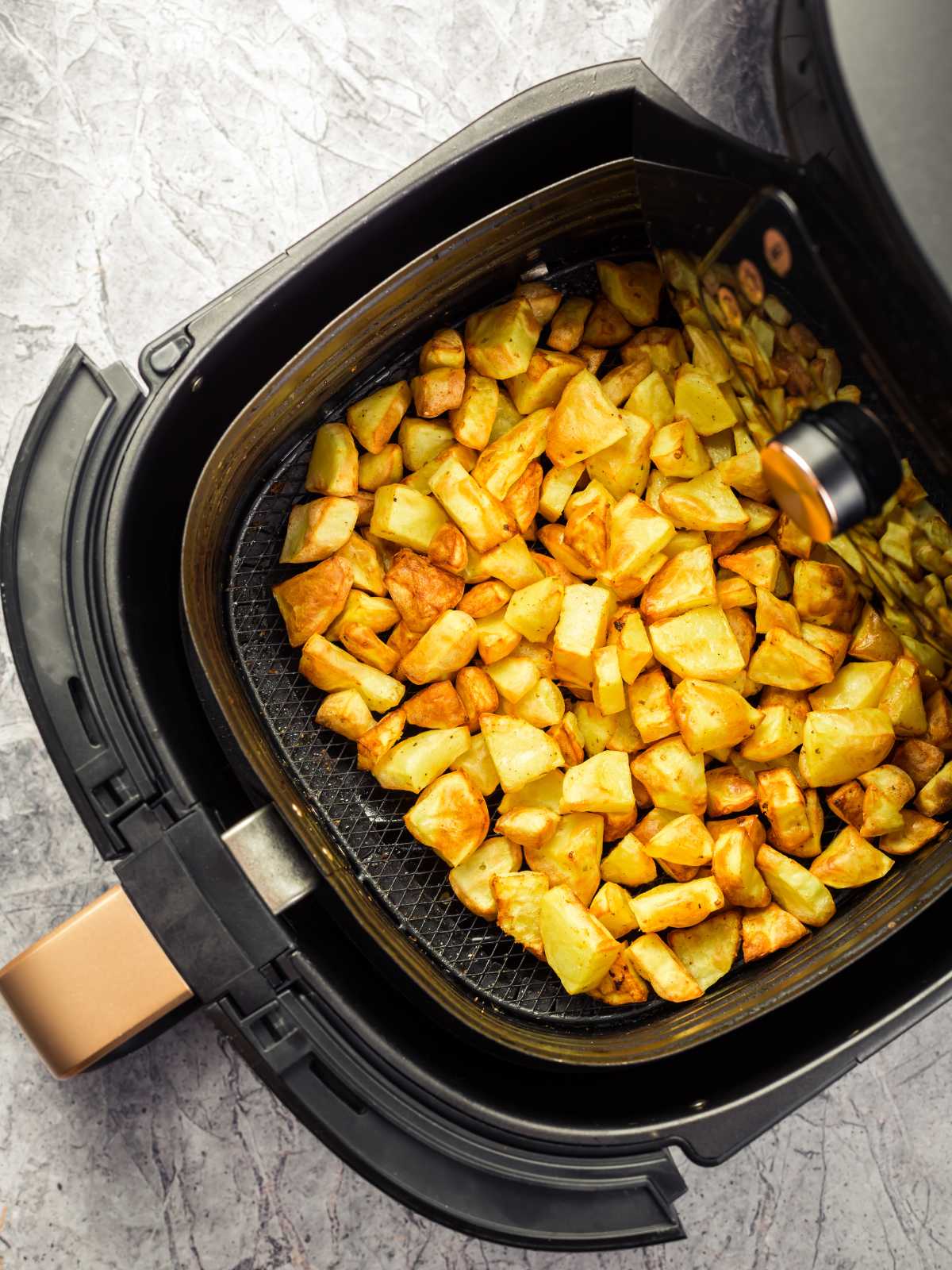
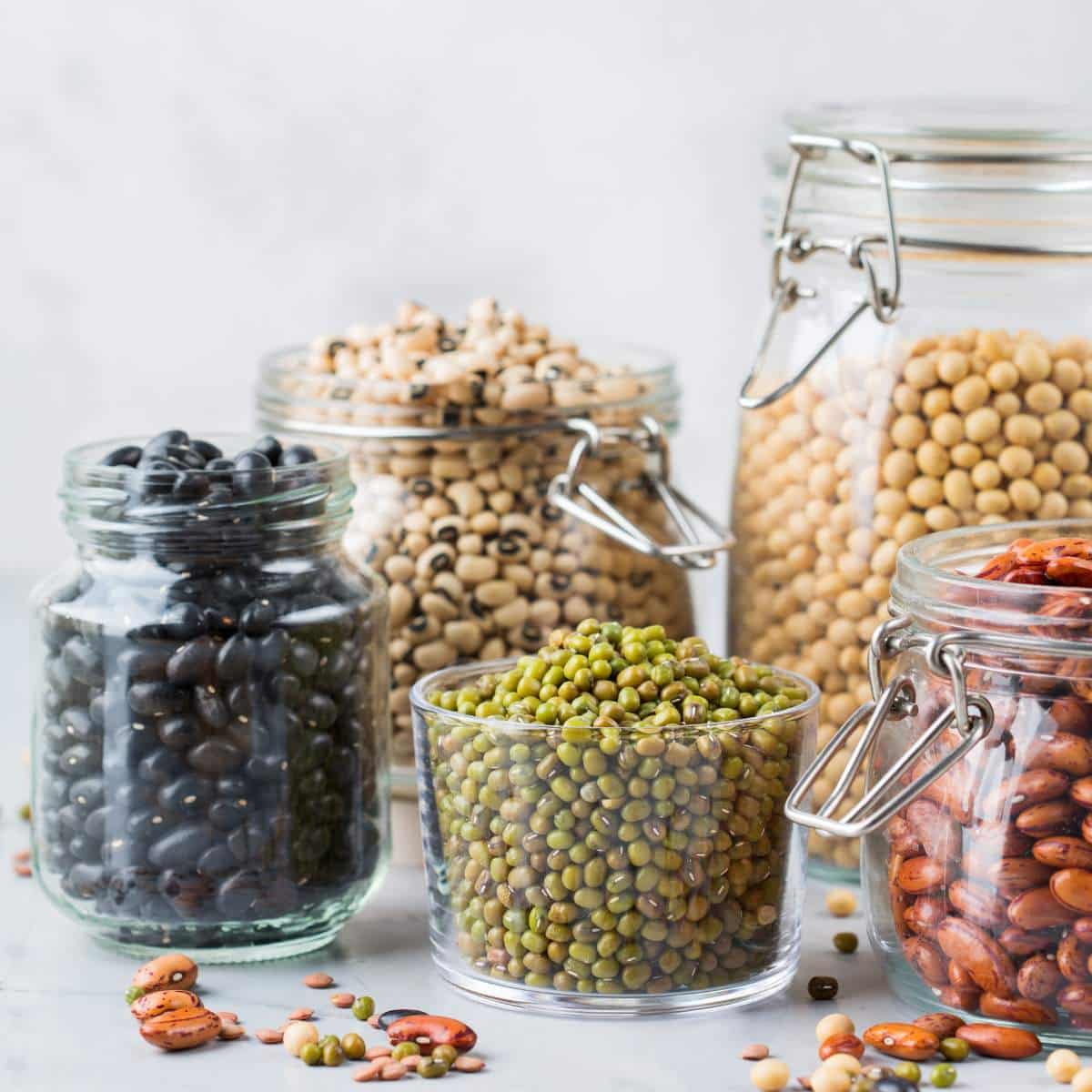
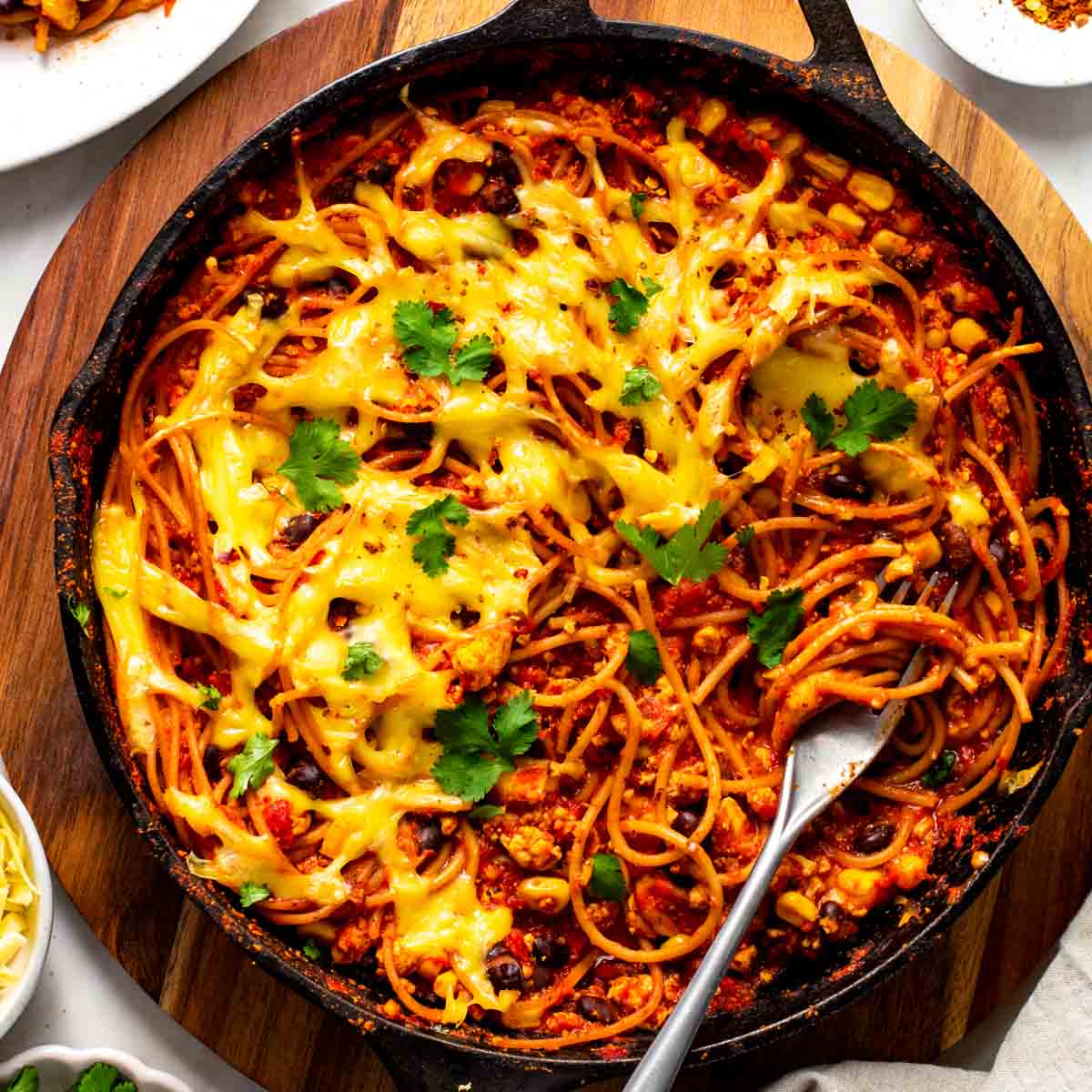
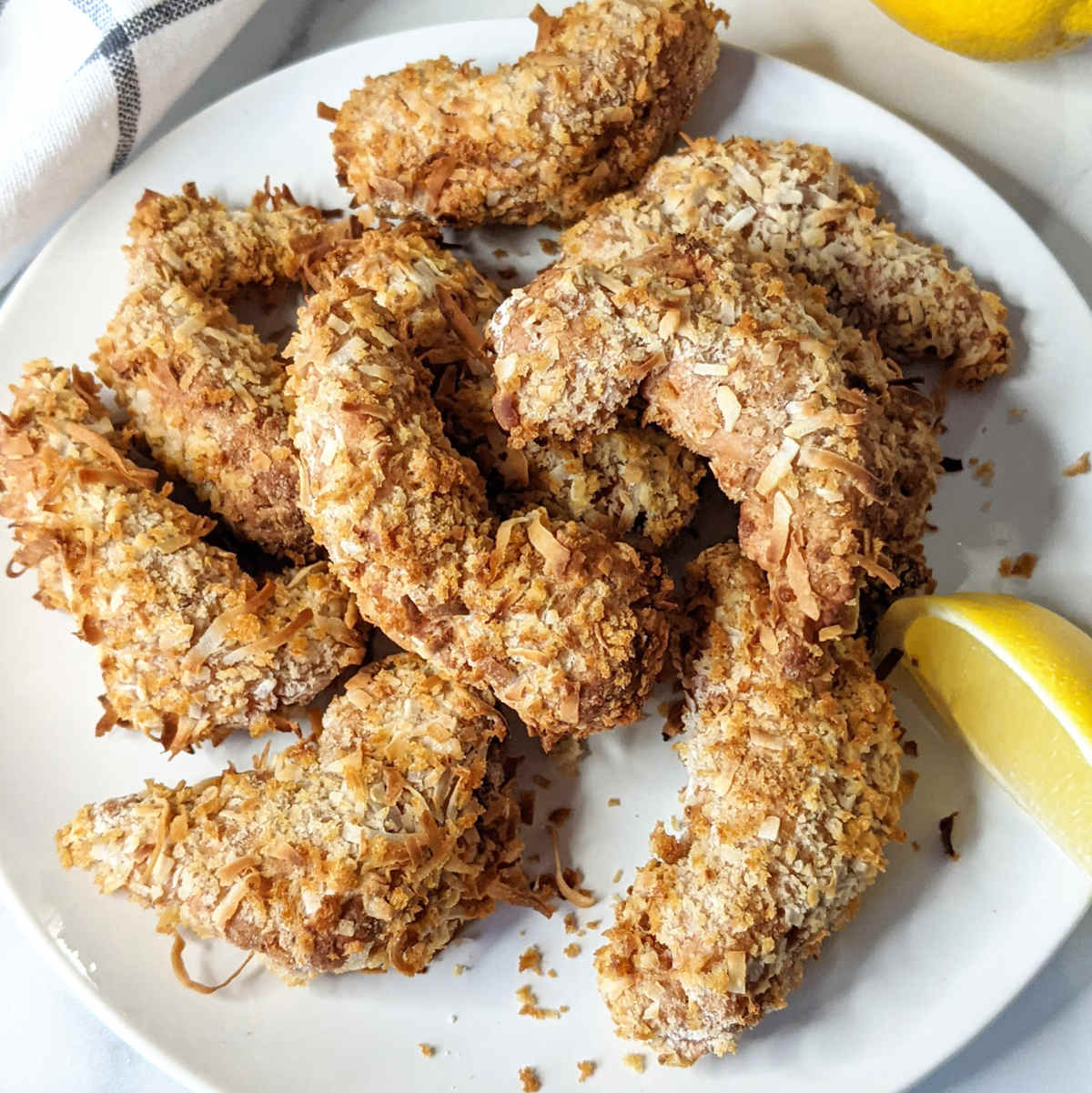
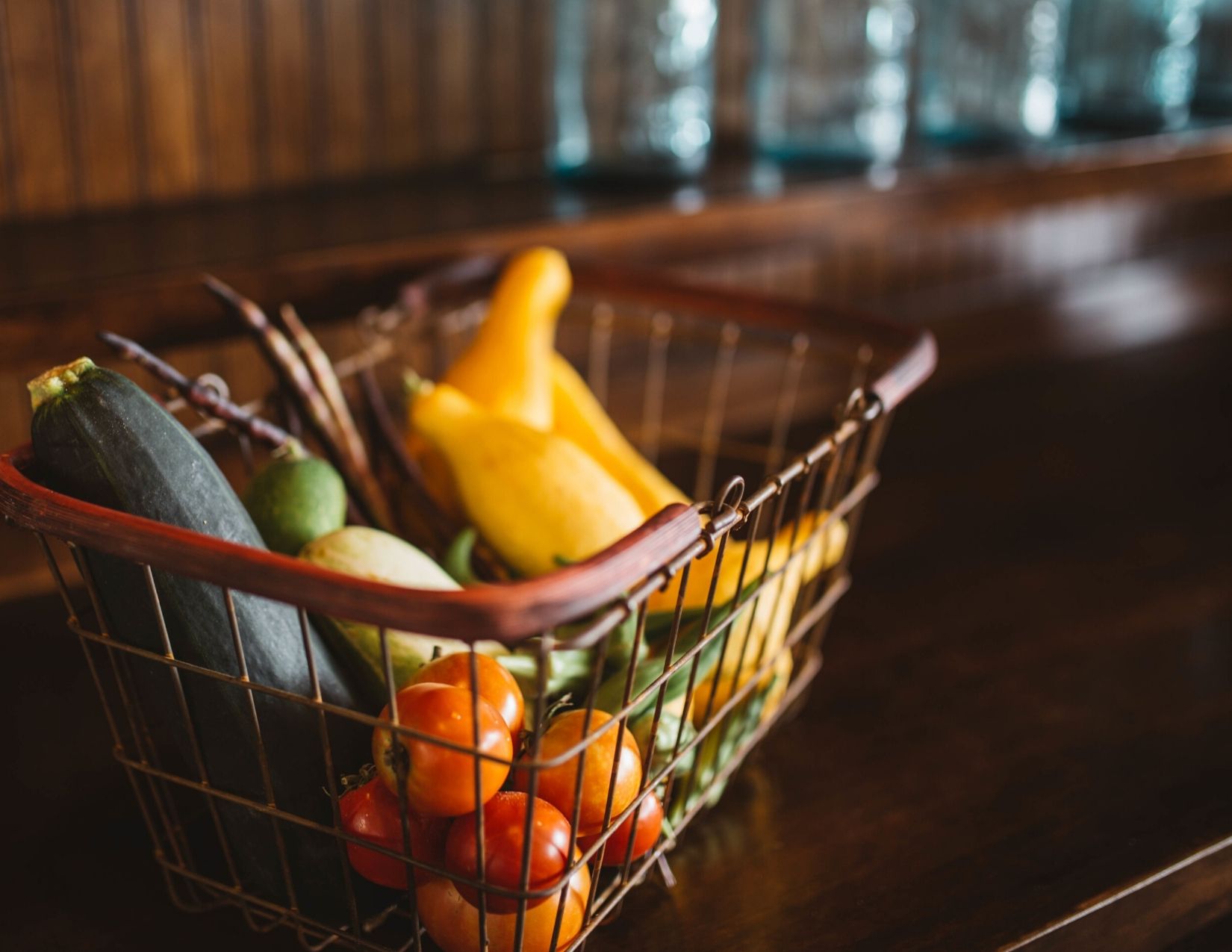
I can’t wait to make this, but am confused on the amounts mentioned of other extra protein sources vs. how much of the pea powder. If I want to make a pea/flax/chia/hemp blend, could I do 1/4 cup of each in a container, and then flavor, as needed?
The suggestions were for adding one extra protein source to the batch of pea protein powder but it’s really versatile so you could add 1/4 cup of each to a container or add 1/4 cup each to your total pea protein batch if you’d like. You may need to add more than the suggested amount of flavors if doing the latter. Hope you enjoy it!
Great source of vegan protein
Can I use it daily in keto?
Hi Mohammed, yes you can absolutely use this daily. I wouldn’t recommend more than one serving daily just in case it causes any digestive discomfort.
hey, this is just pea powder. not pea protein. It hardly have 20% protein content. Rest are starch, fat, fibres and other things.
Correct. This has about 11g of protein per serving so not as much as commercial protein powder but there are many benefits to including the fiber and additional nutrients that come with it. It’s all explained above in the article 🙂
This is not pea protein, it’s pea flour. To get pea protein you need a device to extract the starches and fibers.
True, it is technically pea flour but there are benefits to including the fiber and additional nutrients that come with it. It’s all explained above in the article 🙂
Our body is our dietitian. Our tell you time to time about how much protein we need through “hunger” signals. And if you follow hunger signals, you will be amazed to know that how less you need protein.
Those calorie and carb calculations does not stand any more. Those calculations are for our mental satisfaction only.
Hi. I got some peas from a farmer friend. Will rincing them a number of times be enough? And then how do i dry them? How will i know if they are dry enough to make into powder?
I didn’t rinse mine but I bought mine bagged from the store. If you’d like to rinse them I’d just make sure to spread them out evenly and let them dry thoroughly before blending. Any moisture will turn it into a paste instead. Also, make sure that they are split peas.
Hello great article, very informative. So you said “Split peas, are also known as field peas,” ?? I always thought they were different. Also I wanted to ask if it’s ok to skip the rinsing as one normally would if they were being cooked? Thanks .
Thanks, Lina! Field pea is a more general term as there can be many varieties. Apologies for the confusion! And yes, no rinsing required. If you do rinse you will need to let them thoroughly dry before processing so you don’t end up with a pea paste instead of powder.
I will have to give this a try! I have never heard of such a thing before and would definitely try it.
Please do! It is incredibly easy and a huge money saver. I may never buy protein powder again! 🙂
I had no idea you could make protein powder out of peas. This is very informative and well done.
Thank you, Angela!
I’m so impressed with how easy this is! It’s hard finding a good vegan protein and I love the extra suggestions. Thanks for sharing! This is wonderful!
So glad you like it! 🙂
What a great source of protein! So convenient too. 🙂
Thanks, Carrie!
Wow this is such a useful recipe!! Protein powders can get expensive so I’m so excited to start making my own now!! Thanks for sharing!!
You’re so welcome! 🙂
This recipe gave me lectinpoisoning. DYOR
Hi, I’m so sorry to hear that! The lectins in split peas are very minimal but can cause negative symptoms in those with digestive sensitivities such as IBS. You can soak and dry the split peas to remove the lectins and make protein powder that way if that’s the case. I also recommend eating no more than the 1/4 cup serving size at a time. Hope this helps!
That sounds horrible! Where can I read more about lecithin poisoning?
So many foods have lectins and phytates also oxalates. I soak & dry all my nuts, seeds, grains, etc. to lessen the antinutrients. I sometimes buy them already sprouted if I don’t have time. Living nutz sells the nuts and seeds sprouted, even the nut butters. I buy quinoa already sprouted. Our ancestors knew to do this but us lazy modern people don’t know about it or don;t have time for it.
What are the proportions of water to pea protein to make a milk substitute? Thanks
I haven’t tried using it as a milk substitute sorry, but I’ve seen it made by blending cooked split peas with water and straining. Adding this to water will be more like a protein shake than pea milk.
Genius! Why did I think the split peas had to be cooked? I used to just add frozen peas to my smoothies.
I had always thought that too but turns out split peas are one of the legumes that doesn’t need to be 🙂 Frozen peas are great in smoothies too–just less protein per volume but great for making it more filling!
I feel like you just told me that the earth is not flat!!! thanks!!!
Haha you are very welcome!! Hope you enjoy it 🙂
So technically this is pea flour not pea protein. Pea protein would be protein extract from peas and pea flour is grinder peas or did I miss the protein part somewhere? This still includes all the carbs right?
Hi Elvis, yes all of that is explained in the post above. Most people do not have the equipment to make actual protein powder at home so this an easy homemade alternative, great for adding to smoothies to up the overall protein content.